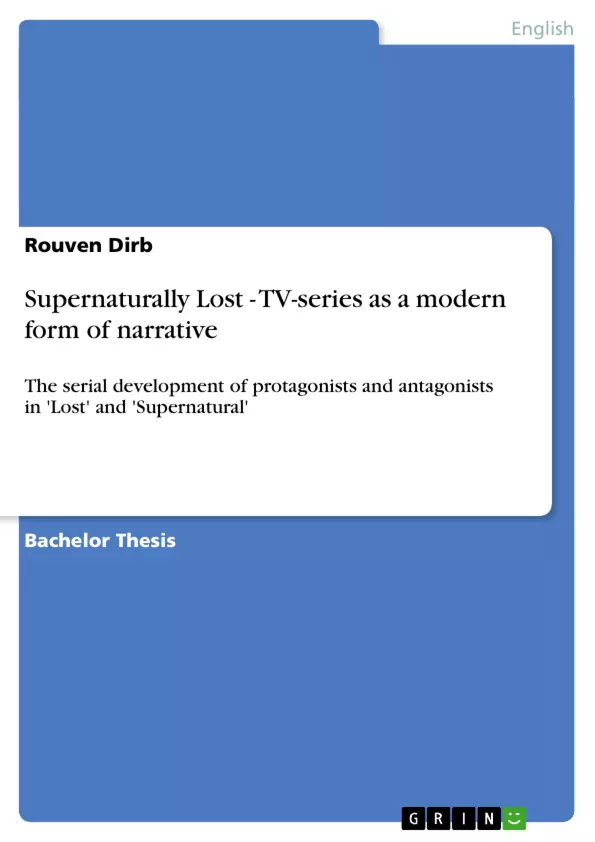Tales and narratives have appeared in different forms since the birth of
mankind. It has all started with ancient cave paintings that have told stories to
those who have found them. The next step has been the writing on stones, like
the ten commandments of the holy Bible. The writing on paper has been a
progression to the writing on stones and has until today become the most
popular form of narrating and telling stories. During the last century, however,
a new form of providing an audience with narratives has slowly arose, which
has, until today, managed to become quite a competition to books: films and
TV-series. While books are still the most popular medium for telling stories,
TV-series and films have managed to create a steadily growing niche.
This new possibility of telling stories with actors, sound, music and special
effects has become more and more popular. While films always have to hope
for a sequel, which depends on the gross the film has made, TV-series can and
must focus on a narrative sequence from the beginning. It all starts and ends
with seriality.
Inhaltsverzeichnis (Table of Contents)
- Introduction
- Seriality and serial narration
- Characters
- Protagonists and antagonists
- Series, Serial and cumulative narrative
- Lost
- Supernatural
- Seriality in TV-series
- Lost
- Supernatural
- The development of protagonists and antagonists
- Lost
- Science and faith
- Kate's affection
- Protection of the island
- Supernatural
- Family protection
- The demons' plan
- The angels' recklessness
- Lost
- Similarities and differences in character development
Zielsetzung und Themenschwerpunkte (Objectives and Key Themes)
This bachelor thesis analyzes the serial development of protagonists and antagonists in the TV series "Lost" and "Supernatural," examining how these characters evolve throughout their respective narratives. The study uses the complete six seasons of "Lost" and four seasons of "Supernatural" (as released in Germany) as its primary source material.
- The definition and application of seriality in television narratives.
- Character development of protagonists and antagonists in "Lost" and "Supernatural."
- Comparison of the character development strategies employed in both series.
- The impact of series format (ongoing vs. concluded) on character arcs.
- The exploration of theme-based antagonists.
Zusammenfassung der Kapitel (Chapter Summaries)
The introduction establishes the context of narrative forms, highlighting the rise of television series as a significant storytelling medium. It then introduces the thesis's focus on "Lost" and "Supernatural" and their character development. The chapter on seriality provides a definition and historical overview of serial narratives. The chapter on characters defines protagonists and antagonists, setting the stage for the subsequent analysis of "Lost" and "Supernatural." The following chapters delve into the individual series, analyzing the serial development of their key characters, focusing on specific plot lines and character arcs, without revealing major plot points or conclusions. The chapter on similarities and differences will compare both shows.
Schlüsselwörter (Keywords)
Seriality, serial narration, television series, character development, protagonists, antagonists, "Lost," "Supernatural," narrative structure, theme-based antagonists, comparative analysis.
- Quote paper
- Rouven Dirb (Author), 2011, Supernaturally Lost - TV-series as a modern form of narrative, Munich, GRIN Verlag, https://www.hausarbeiten.de/document/182897


